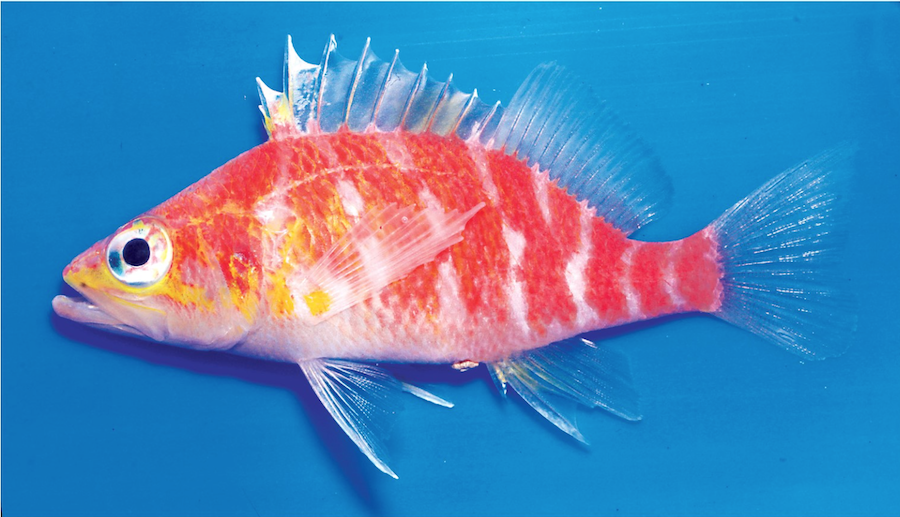The anthiine genus Plectranthias contains over fifty species of small to medium sized benthic, reef dwelling species. With the exception of P. garrupellus in the Western Atlantic, the genus is restricted to the Indo-Pacific region. Most species are small, highly secretive, and live in very deep waters well beyond recreational SCUBA depths. As such, the group remains poorly represented in museum collections, with many species known only from a single holotype. P. bennetti is the newest species described from a single specimen known from the Coral Sea.

In this beautiful species, the body is white with eight red to orange-red, oblique bars. The first four bars are widely spaced and forward slanting, with the fifth being reduced and back slanting. The remaining three bands on the caudal peduncle are tightly spaced and occasionally connected by irregular cross stripes. The head is encapsulated in a red triangular patch on the predorsal region, with a yellow transverse stripe delimiting it from the white lower snout.
The dorsal fin is mainly translucent except for the first three spinous rays, with the inter-membrane spaces tipped in yellow and white. This species possesses the ability to exhibit rapid change in its stripe pattern, breaking up the white cross stripes into a series of broken dashes. The color change is attributed to stress in captivity, and will reconnect once placed in a comfortable environment.

The holotype is known from a single specimen at 63m in Holmes Reef, Coral Sea, with a second specimen from the same region collected for the aquarium trade. Similar specimens possibly representing the same species have been sighted and collected in Fiji, Pohnpei and Moorea by Dr. Richard Pyle and Rufus Kimura respectively, suggesting that the geographical distribution of this species may spread further into Micronesia, Melanesia and the French Polynesia.
The specific epithet “bennetti” was named in honour of Tim Bennett, deep water fish collector from Cairns Marine. Plectranthias bennetti is the 52nd species to be described, right after Plectranthias alcocki in 2014.



